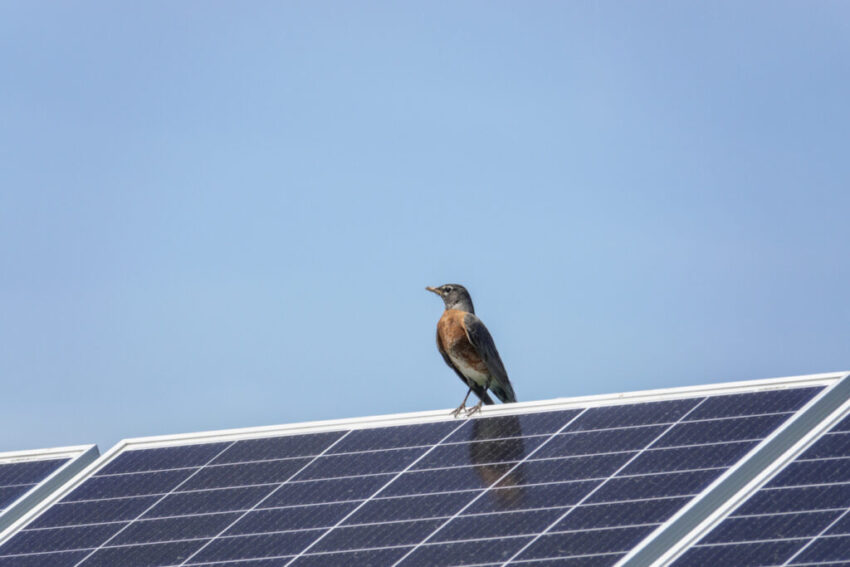(Photo: Argonne National Laboratory)
Solar is set to account for half of new electricity added to the grid in the United States this year, according to predictions from the Energy Information Administration.
The forecast comes as the Trump administration has set up roadblocks to clean energy development, including funding cuts and an order that directs Interior Secretary Doug Burgum to personally approve all solar and wind energy projects on public lands.
Developers are on track to add 33 gigawatts of solar power in the U.S. in 2025, accounting for about half of the total new electricity generating capacity planned for the country, the agency said on Wednesday.
In the first half of the year, 12 gigawatts of solar capacity was added to the grid with the remaining 21 gigawatts planned in the second half.
If energy developers’ plans are fully realized, large-scale solar power additions in the U.S. would reach a record single-year high, said the EIA.
Battery storage, wind, and natural gas power plants account for virtually all of the rest of the 64 gigawatts of capacity additions planned for 2025.
Solar energy does not produce global warming emissions. That makes it central to plans by U.S. states to decarbonize, while also meeting record-high electricity demand brought on by energy-intensive industries like data centers.
Many of the federal government financial incentives that propelled the development of solar power over the last several years, however, will disappear under the administration of President Donald Trump, adding uncertainty to future developments.
On Aug. 1, Interior Secretary Burgum signed an order seeking to rein in “environmentally damaging” solar and wind power projects on federal lands. Burgum said the clean energy technologies were an inefficient use of “federal lands when compared to other energy sources with much smaller footprints, like nuclear, gas and coal.”
A week later, the Environmental Protection Agency announced it was ending a $7 billion program that offered solar energy grants to help states develop solar for low-income households. Nevada lost a $156 million grant from the cancellation.
Last month, Trump’s “Big Beautiful Bill” rolled back most federal support for renewable energy, including tax credits that fueled solar development.
But a July 15 memo mandating that all solar and wind energy projects on public lands be personally approved by Burgum could be especially significant for Nevada – where more than 80% of land is federally managed.
Trump policy prompts NV Energy to seek escape hatch for would-be clean energy transmitters
In an Aug. 4 letter to Burgum, Republican Gov. Joe Lombardo wrote that in Nevada “solar projects deep in the project pipeline have been frozen” by the administration’s July announcement.
One of the projects listed by Lombardo – 174 Power Global’s Boulder Solar III project – is listed by the EIA as one of the solar projects planned for installation in 2025, but it has yet to receive regulatory approval by the federal government.
“Solar energy development in Nevada is crucial to our state’s economic future and will contribute to the Nation’s energy dominance and independence,” Lombardo wrote.
In 2024, Nevada ranked fourth in the nation in total electricity generation from utility- and small-scale solar resources combined. Solar provided 31% of the state’s total generation, according to the EIA.
While Nevada’s solar capacity has grown substantially, most of the new solar capacity nationally in 2025 was attributed to Texas, California, and Arizona.
Texas accounted for more than a quarter of the solar power developed so far in 2025. For the second half of the year, Texas plans to add another 9.7 gigawatts of new solar capacity, or nearly half of all of U.S. solar planned for development over that time period.
Battery storage accounted for the second-largest share of capacity additions in the first half of the year, about half of which was in Arizona or California.
Relatively little generating capacity has been retired this year, according to the EIA.
In the first half of the year, only 2 gigawatts of the 8.7 gigawatts scheduled to be retired from service this year were pulled back. More than 3.6 gigawatts of power planned for retirement have been delayed or canceled.
If the other planned retirements stay on track, coal-fired power plants will account for 71% of the retired capacity this year, followed by natural gas at 19%.
Click this link for the original source of this article.
Author: Jeniffer Solis
This content is courtesy of, and owned and copyrighted by, https://www.nevadacurrent.com and its author. This content is made available by use of the public RSS feed offered by the host site and is used for educational purposes only. If you are the author or represent the host site and would like this content removed now and in the future, please contact USSANews.com using the email address in the Contact page found in the website menu.





